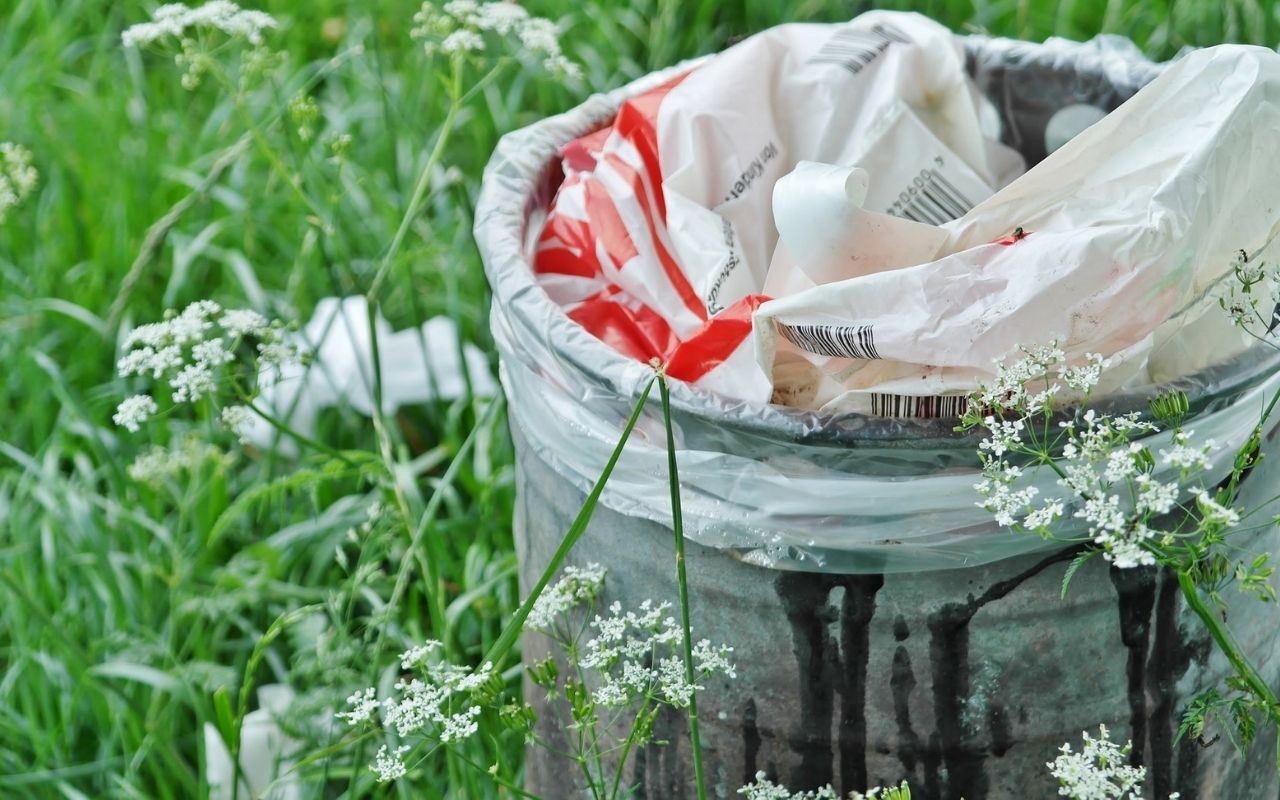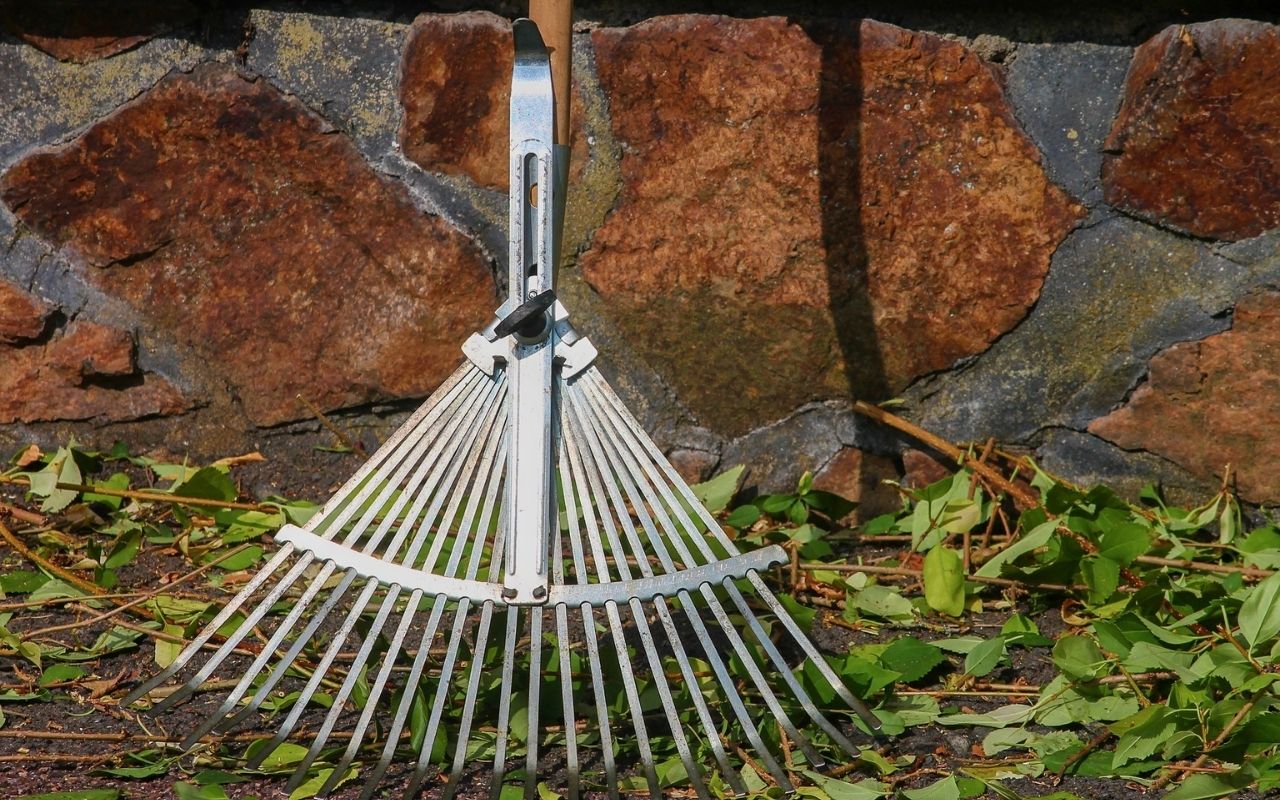The term “spring cleaning” usually refers to cleaning out our homes each spring, but it applies equally well to cleaning up your yard! April is a good time in Alexandria, Arlington, Fairfax, and surrounding areas of Northern Virginia to inspect your landscape for any winter damage, fallen branches, debris, weeds, broken irrigation, and more. Your garden will not only look better after a spring cleanup, your trees, shrubs, and landscape plants will be healthier too.
In this article you’ll learn:
- Why you should spring clean your yard and garden
- Why a spring cleanup involves more than just tidying up
- The ten most important spring yard clean up tasks to do this year
- How to get it all done if you don’t have time or energy to do it yourself
When to Start Your Spring Garden Cleanup
As soon as spring weather warms up, your shrubs and trees start preparing for their explosions of flowers and new foliage. To make sure you’ll get the most out of this seasonal display, give your garden, shrubs, and trees an early spring cleanup.
If you can, begin spring cleaning for your yard before trees and shrubs leaf out. It’ll be easier to see and deal with any problems without leaves getting in the way.

Pick up any trash from your yard as part of your spring yard cleanup.
Benefits of a Spring Yard Cleanup
A thorough spring cleanup in your yard involves much more than simply raking or sweeping up debris. Instead, the goal is to remove or fix anything that could compromise the health, appearance, or safety of your valuable landscape plants. The end result of an early “spring cleaning” is a healthier and more attractive garden for the growing season ahead.
This spring cleanup is especially important for your trees. Overwintering insect pests and diseases that found hiding places in your garden are waking up, too, and will head straight for them. One of the best ways to reduce or eliminate garden pests and diseases is to remove the places they hide (such as fallen leaves).
When you follow the 10-step spring yard cleanup checklist below, you’ll be setting the stage for your shrubs and trees to sail into summer vigorous and problem-free. And who doesn’t want a more attractive property to spend time in over the summer?
Your 10-Step Spring Yard Cleanup Checklist
There are ten important tasks you should do each spring to ensure your plants and landscape will look good throughout the spring and summer. These include:
1 Check for Winter Hardscape Damage
Look for anything in your yard that hasn’t fared well over the winter (or wasn’t repaired before winter arrived). This includes non-plant damage from frost heaving, such as pushed-up paving and landscape edging, and broken water lines. You don’t want to waste water or be surprised by your water bill because of an undetected leak, and you don’t want any dislodged concrete, stone, or metal to be a tripping hazard. Replace any broken or damaged items before spring growth begins in earnest.
After you’ve done a survey of your garden’s hardscape, you can start on tasks for your planting areas.
2 Clear Away Weeds
No one likes weeding, but the sooner you do it, the better. Left to grow unchecked, weeds will compete with your trees and shrubs for moisture and nutrients that the trees need to help them through our long, hot summers.
If you pull out weeds from around trees and shrubs before they have a chance to set seeds, you’re automatically reducing the volume of weed seeds that can germinate. You’ll also have an easier time pulling annual weeds when they’re small and the ground is softer from spring rains. Plus, if they haven’t had time to develop extensive roots, weeds will come out of the soil more easily with less effort. The best time to get rid of weedy growth is when your soil has warmed up but before it dries out.
3 Clear Away Plants from Around Your Trees
Remove any debris, overgrowth, and competing plants from around tree trunks. This includes lawn, groundcovers, and ivy (which should not be touching or climbing your trees’ trunks).
These plants can hide defects, such as areas of decay, and can trap moisture around the root crown, creating the perfect environment for fungal problems to develop. Trash and plant debris collects underground cover and behind ivy, where it creates a breeding ground for animal pests. It’s best to remove all competing plants within the drip line and cover the soil with mulch. Doing so will get rid of material where insect larvae hatch, fungus grows, and weeds thrive.
The area at the base of a tree (called the trunk flare or root flare) is particularly important to your tree’s health. The trunk flare should always be visible and never covered by mulch. You should treat the area within a tree’s drip line as a no-go zone for plants, even ones you want in your garden.
4 Remove Fallen Branches and Twigs
Branches and even smaller twigs won’t break down easily and can damage mower blades or other lawn equipment. Have them chipped for mulch or dispose of them in your green waste bin.
When you’re cleaning up fallen branches, be sure to look up into your trees’ crowns to see if there is a reason for the dropped branches. It could simply be breakage from winter snow or ice loads, but broken branches might also be caused by decay, disease, a broken cable, improper pruning, and more.
5 Prune Broken & Dead Branches
If your trees have winter storm damage, broken branches (especially if they’re still hanging from the tree), or dead branches, call a professional tree service to prune and treat these. Your trees will not only look better, they’ll also be safer and healthier after professional pruning. But be careful – you should always have a tree care professional climb your trees; it’s too dangerous to try this yourself.
If you’re comfortable pruning, you can prune what you can reach from ground level. Look for broken-off limbs that have hanging bits of branch attached, jagged branch ends, and stubs where whole branches have broken.

Picking up any broken branches and twigs will help prepare your yard for summer.
6 Rake Up Debris
Remove any trash or debris that may have blown into your yard over the winter. Not only does it look unappealing, but it could also attract rodents and other pests.
7 Remove Fallen Leaves
If you didn’t get round to raking up leaves last fall, or if your neighbor’s leaves blew into your yard over the winter, this is the time to deal with them. It’s especially important to remove any leaves that are matted down as they’ll prevent water from reaching the soil below and can encourage fungal growth.
If the leaves are from healthy trees or plants, you can compost them or run them over with a mulching mower. But if the leaves are from diseased plants or ones that were infested with insect pests last year, dispose of them in a plastic bag to avoid spreading the disease or pest this year.
8 Rake and Fluff Your Mulch
Winter rain and snow can compact mulch and make it harder for water and air to pass through to the soil below. After you’ve revived the mulch layer in planting beds and around trees, you can better assess its volume and decide if you need to add more. Don’t overdo it; remember that 2 to 4 inches are the ideal depth for mulch.
9 Test Your Irrigation System
It’s always an excellent idea to check your irrigation system before your valuable landscape plants need it! Don’t wait to turn on your system until it’s hot and your trees and shrubs are water-stressed. If any pipes or emitters have developed leaks or breaks over the winter, you’ll have to wait to have it repaired and your plants will suffer. If you check your system early, you can schedule repairs and your irrigation system will be ready when your garden needs it.
Also, check your irrigation system to make sure it has separate zones or watering cycles for your trees. Unlike small, shallow-rooted plants that need frequent watering (such as lawns and groundcovers), trees need less frequent, deeper watering cycles.
10 Tune Up Your Tools
Good tools are an investment and if you care for them, they’ll last a lifetime. Sharpen the blades on your pruning shears and loppers, as well as on your mower, shovels, spades, and soil-cultivating tools. Sharp, clean blades make your work easier, and sharp tools make clean pruning cuts that will heal faster than ragged ones. And don’t forget to oil! When you oil the hinges and blades on your tools, you’ll make them work smoothly and keep rust at bay.
Short on Time or Energy? Do This Instead!
If you’re overwhelmed by the amount of clean-up work your garden needs, it’s better to hire some help than let your garden go untouched.
When you’re looking for help, be sure to hire people who are qualified for the jobs you need to be done. A general handyperson might be great at small tasks but for more specialized work like repairing cracked pipes or pruning trees, it’s worth it to hire licensed professionals. People can call themselves tree trimmers or landscapers, but that doesn’t guarantee experience or knowledge, nor does it ensure liability coverage for damage to your property.
Tree damage from poor pruning, mowers, and string trimmers is difficult and sometimes impossible to repair after the fact. You’ll end up paying far more than you anticipated to repair bad work. We recommend that homeowners get written estimates for yard work (make sure it includes itemized tasks) so they can compare costs and the extent of work that will be done.
Specifically, ask potential gardeners or landscapers how they will do tasks such as mulching or trimming, and shaping shrubs. You want to avoid damaging mulch volcanoes and sheared shrubs that will need corrective pruning later. And if you hear the word “topping” in relation to your trees, find someone else asap (here’s why topping is the worst thing to do to a tree).
Need a hand?
We’re tree experts and we love our work. If you think your trees need spring pruning, you notice what you think may be disease or damage in your trees, or if you want a dying tree to be removed, give us a call. We’re also available for consultations and can tell you everything that’s going with your trees or shrubs, plus what steps you should take to fix any problems.
Get helpful tips, local news, inspiring stories, and more delivered right to your inbox every month. Don't miss another issue - join today!





